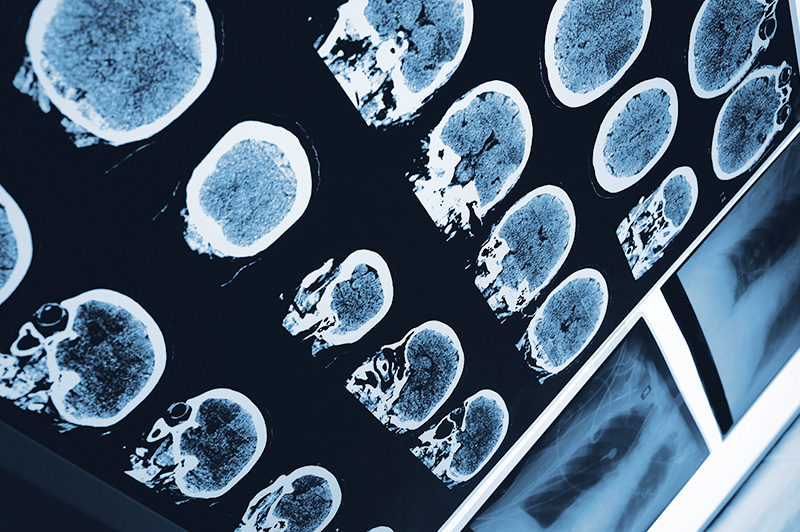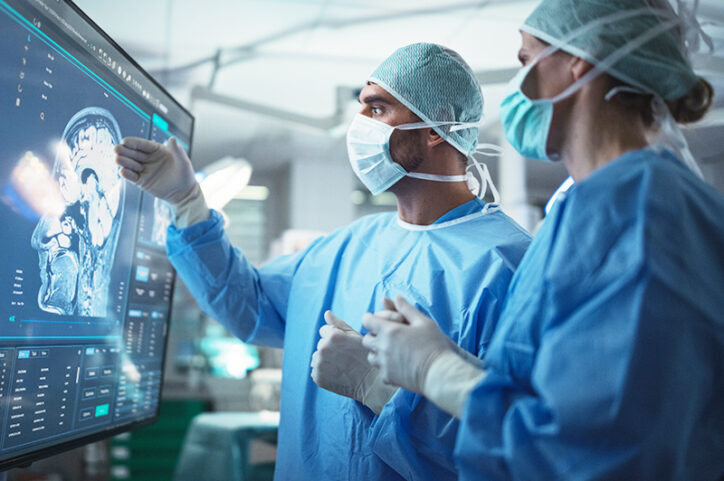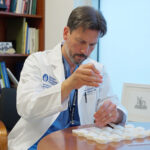The dopamine reset: Restoring what’s missing in AADC deficiency

In March 2023, a young girl came to Boston Children’s Hospital unable to hold up her head — one striking symptom of aromatic L-amino acid decarboxylase (AADC) deficiency. This rare neurological disorder prevents the brain from producing dopamine and serotonin — essential chemicals for controlling movement, mood, and basic body functions. Without them, children experience muscle weakness, movement disorders, seizures, and developmental delays.
Within months of receiving a first-of-its-kind gene therapy, the young girl began to gain head control and soon after took her first steps. Today, at age 3, she’s thriving.
“Watching her thrive has been nothing short of miraculous,” says her father. The procedure didn’t just give our daughter a new life — it gave us one, too.”
“There aren’t words to express how effective [the therapy] was in this case,” says Phillip Pearl, MD, co-director of Boston Children’s Epilepsy Center, who has overseen the girl’s care.
The family’s experience serves as a case study of the impact of a therapy years in the making.
From Parkinson’s research to pediatric treatment
The FDA approved Kebilidi (eladocagene exuparvovec) in November 2024. It’s the first gene therapy delivered directly to the brain to treat AADC deficiency, and its approval could change the trajectory for patients with this devastating disorder by addressing the root cause rather than just managing its symptoms.
Kebilidi builds on earlier work in Parkinson’s disease, another neurodegenerative condition that involves dopamine-producing dysfunction and leads to symptoms like tremors, stiffness, and balance issues. AADC deficiency affects the same dopamine pathways as Parkinson’s disease — though not through neuron degeneration, but because the body can’t produce dopamine in the first place.
It’s in these similarities that researchers saw an opportunity: If gene therapy could restore dopamine in patients with Parkinson’s disease, couldn’t it do the same for those who produce little to no dopamine at all?
Developing safe and precise delivery
Over the span of more than a decade, this idea evolved into a targeted treatment approach focused on the putamen, a part of the brain that relies on dopamine to regulate body movement. Delivering treatment to this area requires a highly specialized procedure because the putamen is small and precision is critical to avoid damaging surrounding brain tissue. Scellig Stone, MD, PhD, neurosurgical director of Boston Children’s Movement Disorders Program, has been closely involved in adapting and refining the surgical approach for delivery. After observing early procedures internationally, he and his team worked on improving how the gene therapy is infused directly into the putamen.

“I watched them place the vector into the putamen of a pediatric patient and I knew this could be improved — and we could do it at Boston Children’s.”
Stone led a multidisciplinary effort to tailor the procedure for pediatric patients — developing surgical protocols, adjusting anesthesia techniques, and coordinating post-operative care to monitor neurological function and safety. These efforts were part of the SmartFlow Trial, a study Stone co-authored and that was designed to evaluate the safety and viability of delivering Kebilidi using a specialized MR-compatible cannula under real-time MRI guidance. The trial involved three U.S. sites, including Boston Children’s, and treated a total of 13 patients.
Effecting meaningful change
Since beginning the SmartFlow trial, Boston Children’s has treated several children with AADC deficiency, witnessing improvements in motor skills and quality of life.
“AADC is one of the most severe disorders we treat,” says Pearl, who is also a co-author on the SmartFlow study. “But these children don’t just improve, they reach milestones no one thought possible: head control, sitting up, speaking, even walking. This targeted gene therapy, administered directly into the brain, has been one of the most transformational experiences of my career, especially after having followed children with this devastating condition over the past 20 years.”
With more than 60 patients treated worldwide and additional gene and cell-based therapies on the horizon, the success of the AADC trial marks a turning point.
“This therapy proved we can treat the root cause of a disease in the brain,” says Stone. “It’s a blueprint for what’s next.”
Indeed, Boston Children’s is already conducting new trials, including those for Rett syndrome, which causes loss of language and motor skills, and behavioral and neurological problems.
“We’re entering a moment where our understanding of disease biology, gene delivery, and surgical precision are converging,” Stone says. “You’re going to see more of these therapies coming out over the years.”
Learn more about the Gene Therapy Program at Boston Children’s or contact us to refer a patient for treatment.
Related Posts :
-

This two-handed robot goes deep into the brain
Robots have become common partners in the OR, enabling surgeons to operate through small incisions and manipulate tools endoscopically, avoiding ...
-

“Princess June” reigns supreme over Rasmussen syndrome
What do you call a “girly” 5-year-old who adores dolls and frilly nightgowns? If you’re one of June Pelletier’...
-

Lucas receives gene therapy for DMD and finds his super muscles
Lucas Toro has a lot in common with Gekko, the cartoon character from PJ Masks. They’re both “little guys” ...
-

Promising advances in fetal therapy for vein of Galen malformation
In 2024, Megan Ingram* of California and her husband were preparing for the birth of their third child when a 34-week ...





